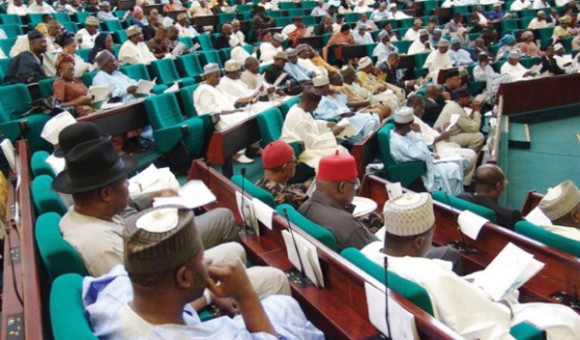
State Creation Fever: More Burden, Less Gain
By Kabir Akintayo,
The proposal to create an additional 31 states, as recently announced by the House of Representatives Committee on Constitutional Review, raising the total number of states from 36 to 67, has sparked widespread criticism from Nigerians.
Political and economic experts have condemned the move as a misplaced priority. Proponents argue that state creation will promote development, enhance representation, and address perceived marginalization.
However, the economic implications suggest increased government spending and potential inefficiencies. The evolution of state creation in Nigeria began in 1967 under the military regime of General Yakubu Gowon following the abolition of regional governments.
Gowon introduced 12 states: North West, North Central, North East, Kano, Benue Plateau, Kwara, Lagos, Western, Mid West, East Central, South East, and Rivers to reduce ethnic tensions and promote national unity during the civil war.
In 1976, the Murtala Muhammed regime created seven additional states, bringing the total to 19. These included Anambra, Bauchi, Bendel, Benue, Borno, Cross River, Gongola, Imo, Kaduna, Kano, Kwara, Lagos, Niger, Ogun, Ondo, Oyo, Plateau, Rivers, and Sokoto.
Under General Ibrahim Babangida, two more states, Akwa Ibom and Katsina, were created in 1987. In 1991, Babangida further increased the number of states to 30, adding Abia, Enugu, Edo, Jigawa, Kebbi, Kogi, Osun, Taraba, and Yobe, while renaming Gongola to Adamawa and Bendel to Delta.
The last state creation exercise was carried out in 1996 by General Sani Abacha, who added Bayelsa, Ebonyi, Ekiti, Gombe, Nasarawa, and Zamfara, bringing the total to 36 states along with the Federal Capital Territory. Nigeria currently has 774 local government areas.
The 1999 Constitution, Part II, Section 8(1), provides for state creation, subject to an Act of the National Assembly, which must be approved by a simple majority of all states in the federation, supported by a simple majority of members of the House of Assembly, and ratified by a resolution passed by a two-thirds majority of each House of the National Assembly.
The agitation for additional states is largely driven by political factors. Many politicians see state creation as a means to secure power, influence resource allocation, and gain access to federal funds. Since most states depend on federal allocations, new states would provide opportunities for political elites to control new administrative structures, often without considering financial viability.
Population size, ethnic representation, and cultural differences are often cited as justifications for state creation, but the key issue remains economic sustainability.
The proposal to create 31 new states raises serious concerns about financial sustainability. If approved, Nigeria would have 67 states. However, of the existing 36 states, only six can survive without relying on the Federation Account Allocation Committee. This raises critical questions about how the proposed states would sustain themselves.
According to the 2022 Economic Confidential report on the Annual State Viability Index, Lagos and Ogun are the most economically viable states. Rivers, Kaduna, Kwara, Oyo, and Edo can survive with limited federal support. The remaining 30 states are financially dependent on federal allocations.
The most insolvent states include Bayelsa, Kebbi, Katsina, Akwa Ibom, Taraba, and Yobe. Only six states generate more internally generated revenue than they receive from the federal government.
This over-reliance on federal allocations explains why most governors opposed the recent tax reform policy, which sought to increase derivation revenue for states that generate more income while reducing federal allocations for less productive states.
The tax reform proposal suggested a 60 percent derivation, 20 percent based on population, and 20 percent on equity. Fearing insolvency, state governors pushed for a revision of the Value Added Tax sharing formula to 50 percent equity, 30 percent derivation, and 20 percent population.
With the newly implemented minimum wage of 70,000 naira for government workers, 27 out of the 36 states will have to depend on the federal government to pay salaries. According to data from the 2025 approved budgets of the 36 states, 20 states saw an increase in personnel expenses exceeding 50 percent, while 16 states experienced minimal increases, with salary expenditures remaining below the 50 percent threshold.
Some states have yet to implement the new minimum wage despite the increase in 2024 federal allocations. Only about nine states can comfortably pay state workers without borrowing or seeking federal bailouts.
Rather than creating 31 additional states, the focus should be on strengthening the existing 774 local government areas and making them function effectively. President Bola Ahmed Tinubu took a bold step in mid 2024 by taking state governments to the Supreme Court over local government autonomy.
The National Assembly should provide the necessary support to strengthen the functions and operations of local governments. One of the primary justifications for state creation is bringing governance closer to the people.
However, with the Supreme Court’s recognition of local governments as the third tier of government, the argument for creating additional states has been significantly weakened.
States should focus on improving internally generated revenue through investments in mechanized farming and agro-processing, developing natural resources to boost local economies, and creating business-friendly environments to attract investors.
From an economic standpoint, creating 31 new states in Nigeria is not viable. The country already faces significant economic challenges, including high debt, poor revenue generation, and an over-bloated government structure.
While state creation may address political and ethnic grievances, it could worsen financial instability, increase governance costs, and further weaken economic development. A better alternative is restructuring Nigeria’s governance framework, strengthening local governments, and improving economic productivity at the state level.
